No Ordinary Business Card
Tokyo's Peerless Artisans #03
One letterpress printing shop in Tokyo seems impervious to the tides of time. In an ever changing world, they satisfy an enduring need.
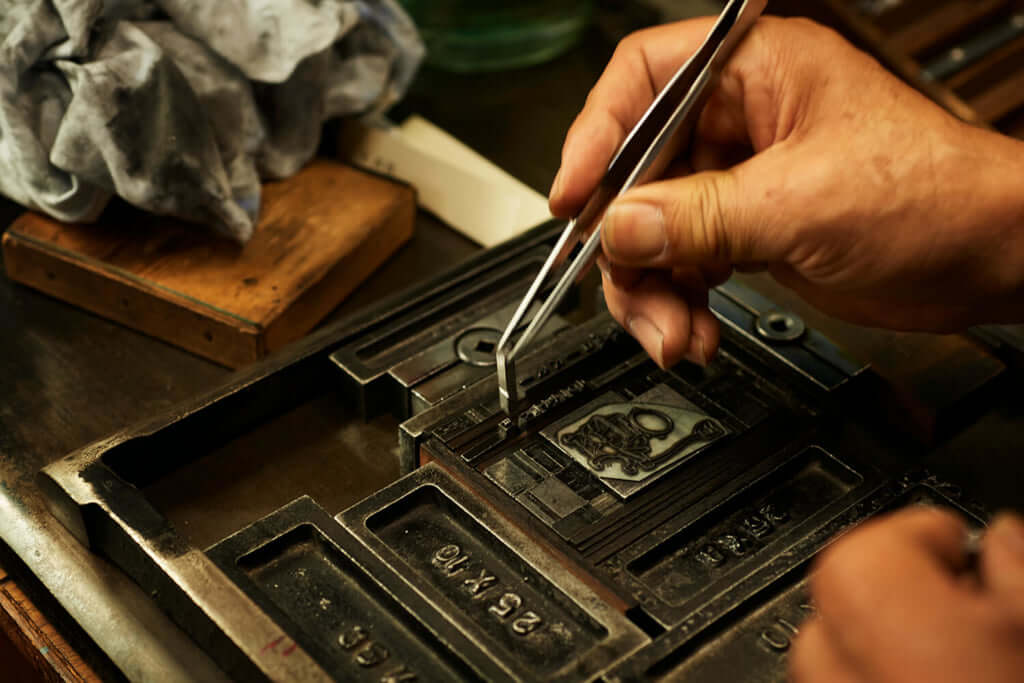
Using tweezers to align letters to create a letterpress plate, which is placed onto a manual platen press printing machine. In addition to business cards and postcards, this type of printing is suitable for smaller items like coasters that are about the size of an old Japanese coin.
Making one’s way down Harumi Street, away from the luxury department stores and elegant shops of Chuo Avenue towards Tsukiji, in Tokyo’s upscale Ginza district, among the narrow alleys behind the Kabuki Theater one discovers a unique melange of small izakaya, elegant apartment buildings, and artisanal workshops. It is clearly still Ginza, but here, on a quiet corner one may open the sliding glass door of Nakamura Katsuji and find oneself transported to a different time, evidenced by the freshly minted envelopes and subtle allure of the classic business cards that greet one from the shining black countertop within.
Akihisa Nakamura is the fifth generation owner of this letterpress business, which he has expanded to include offset printing services as well.
Letterpress is a type of relief printing in which letterforms are either carved out of wood or cast in metal, typically a lead-alloy, arranged by hand to spell out the text of a manuscript, inked, and then pressed against paper, stamping the letters into it.
Relief printing originated with wood block printing in ancient China and gradually made its way around the world.
In the fifteenth century, Johannes Gutenberg was the first to cast movable type from a lead alloy to mass produce the Bible, inventing letterpress printing technology.
In Japan, the traditional art of woodblock printing thrived during the Edo era, but modern relief printing didn’t arrive until the Meiji era when the first letterpress was established in Tsukiji. Other printers soon began setting up shop on nearby Ginza Avenue, until the Ginza-Tsukiji area became the gold standard for the printing industry in Japan.
‘A long time ago relief printing diverged from other types of printing, and there were a lot of craftsmen specializing in letterpress casting, but then, in the 1970s offset printing appeared on the scene, and demand for relief printing suddenly plummeted. Then in 2000, phototypesetting changed the game completely by ushering in the era of desktop publishing. The changing times put a lot of people in the trade out of business, and we were able to acquire their offset printing equipment and use it to jump-start our printing division’, Mr Nakamura says, explaining the origin of his offset printing business.
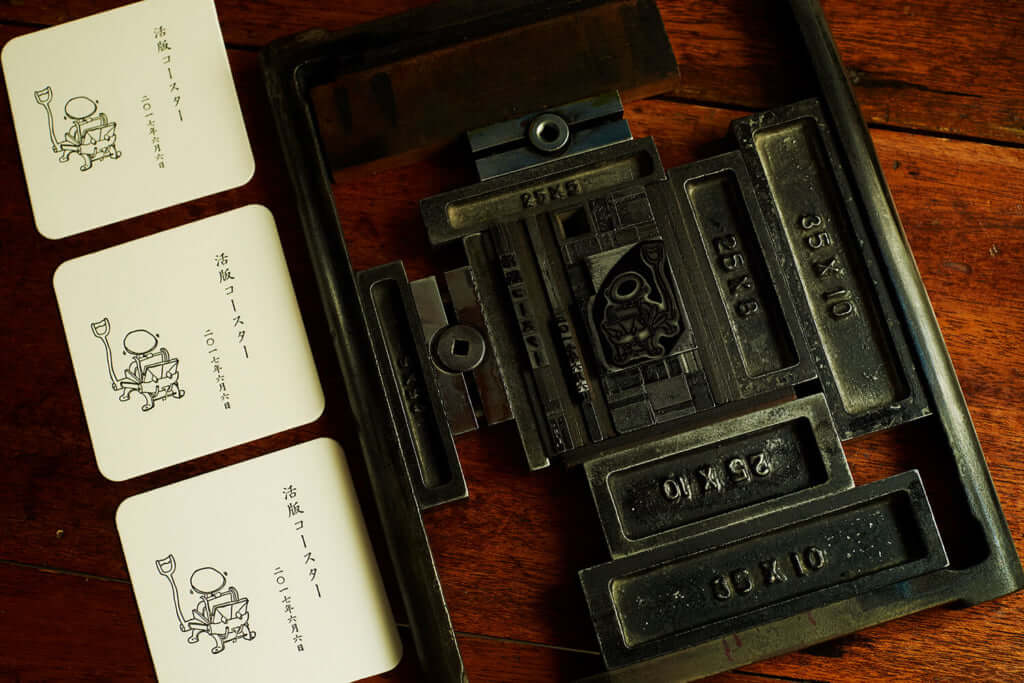
A coaster printed from the plate seen in the picture on the left. The illustration of the platen press is unique.
Although relief printing doesn’t offer much in terms of freedom or flexibility of design, there is a depth to the sublime beauty of the letters and the feel of the paper that other printing methods can never rival. With little prompting, Mr Nakamura will enthusiastically expound on the superior merits of his method with a contagious passion. He seems very pleased to be able to take orders for letterhead and business cards from a range of businesses and individuals who share his vision and devotion to quality.
He tells us that there was something of a renaissance of letterpress printing about a decade ago, thanks largely to the influence of the artisanal letterpress movement in America.
America has a card culture, wherein announcements, invitations, and important occasions such as holidays and anniversaries may be marked with handcrafted cards.
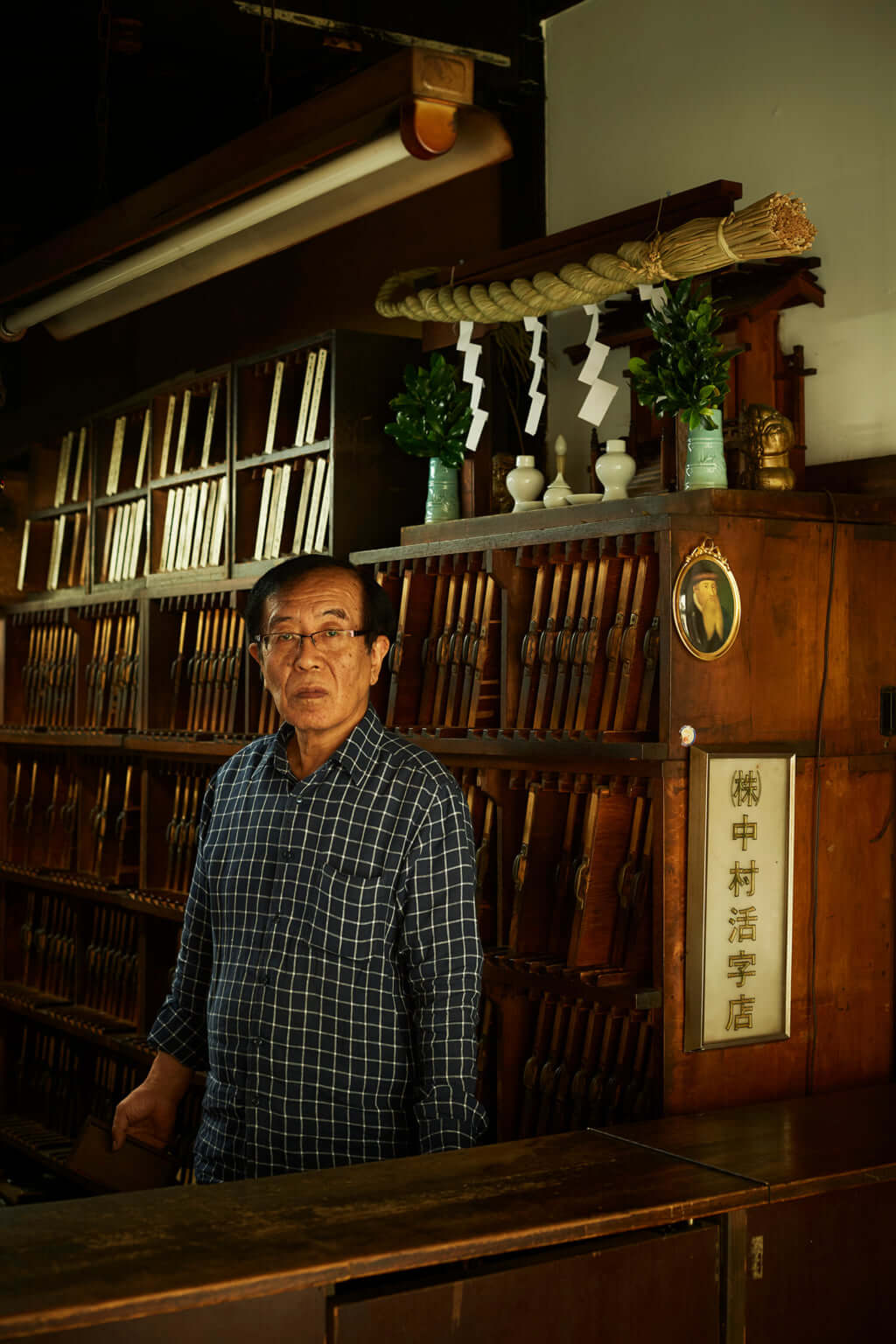
Akihisa Nakamura holds a typeprint box. The letterpress cases have handles and are kept on a shelf next to a small Shinto shrine and a portrait of Gutenberg.
Eventually, small boutique printing presses began springing up around Japan as customers discovered the beauty of handcrafted fonts, the feel of quality paper and the convenience of being able to make smaller orders.
‘Seven years ago we celebrated our 100th anniversary, and we were surprised to receive messages from clients telling us how our business cards had changed their lives. Even with business becoming more and more digitised, the power of a high-quality business card to connect people reigns eternal. We have a young graphic designer who comes here who tells us that she finds our shop soothing. I think there is something tangible about relief printing, something substantial in the letters, that really appeals to people who spend most of their time working in front of computers’.
The print work on Mr Nakamura’s business cards is so delicate, that unless one ran one’s fingertips across its surface on might not even realize that it was relief printed. Other craftsmen lack that sensitivity and leave indentations from the pressure that they use when they print, possibly stemming from an unconscious urge to literally leave their stamp on their work.
Recently a movement of letterpress artisans and aficionados, as well as fans of British and German private presses, has sprung up in Taiwan and they have made their way to Nakamura Katsuji to exchange knowledge to keep the culture of relief printing alive and vibrant.
Many people who come to Japan, for either business or leisure, also find their way here to order business cards. They inevitably order their cards in a mix of the English alphabet, hiragana, and katakana. It is very common to mix alphabets in Japan, but for people from overseas, it creates a distinctive flair.
‘A woman from Poland is coming to pick up her business cards today. We had trouble communicating verbally, but we were able to use the computer to help her design the cards to her specifications’, says Mr Nakamura, smiling as he wraps up her order, cards elegantly impressed with both the alphabet and katakana.
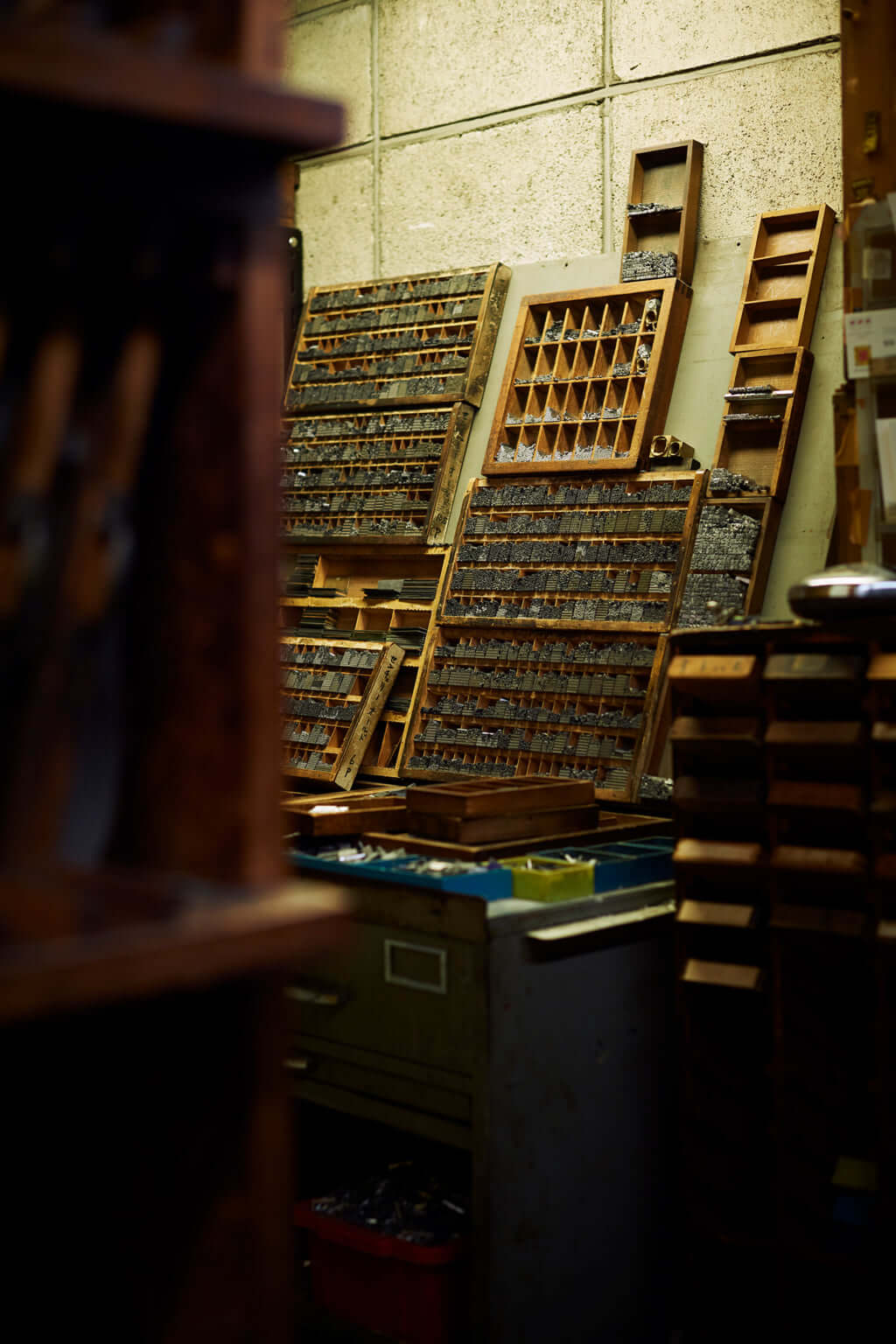
The workshop that previously specialized in casting the letterpresses.
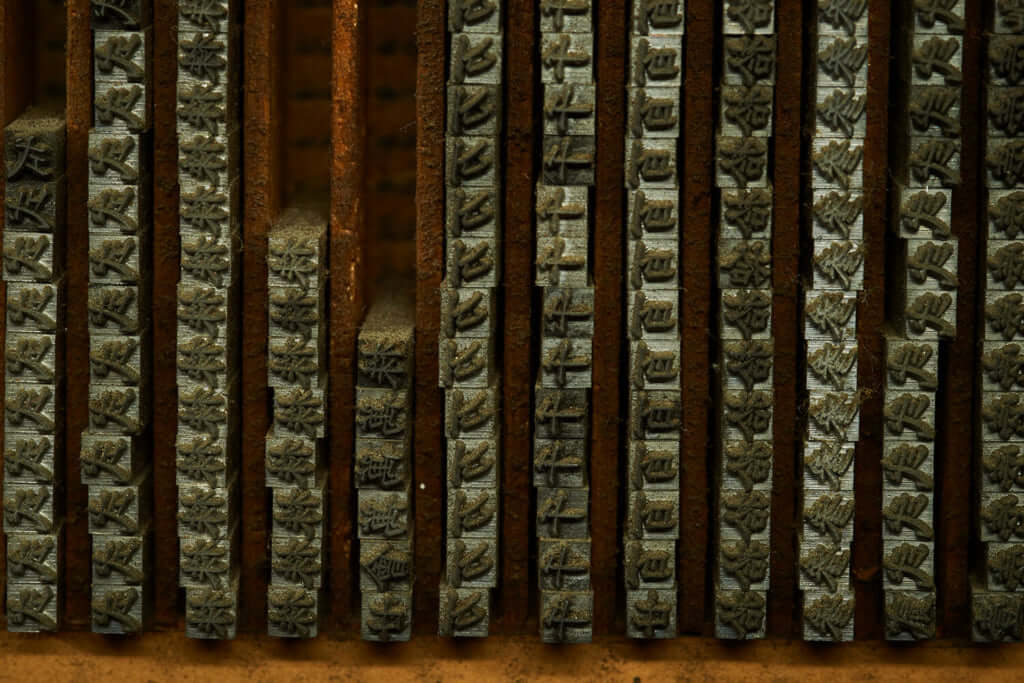
In addition to the more commonly used characters, there are also older, more arcane characters available.
Tokyo’s Peerless Artisans —
#01: The Perfect Shoes >
#02: Distinguished Pipes, Asakusa Style >
#03: No Ordinary Business Card
TRENDING
-
Ishiuchi Miyako, A Singular Perspective on Women
Recipient of the 2024 Women in Motion Award, the photographer creates intimate portraits of women through the objects they left behind.

-
Recipe for Ichiraku Ramen from ‘Naruto’ by Danielle Baghernejad
Taken from the popular manga with the character of the same name who loves ramen, this dish is named after the hero's favourite restaurant.

-
Namio Harukawa, Master of Japanese SM Art
'Garden of Domina' offers a dive into the world of an icon of ‘oshiri’, whose work has now reached a global audience.

-
The Tattoos that Marked the Criminals of the Edo Period
Traditional tattoos were strong signifiers; murderers had head tattoos, while theft might result in an arm tattoo.

-
The Emperor of Japanese Porn is Now the Star of a Netflix Series
Deliciously funny, The Naked Director especially succeeds in reviving the atmosphere that was so characteristic of 1980s Japan.





